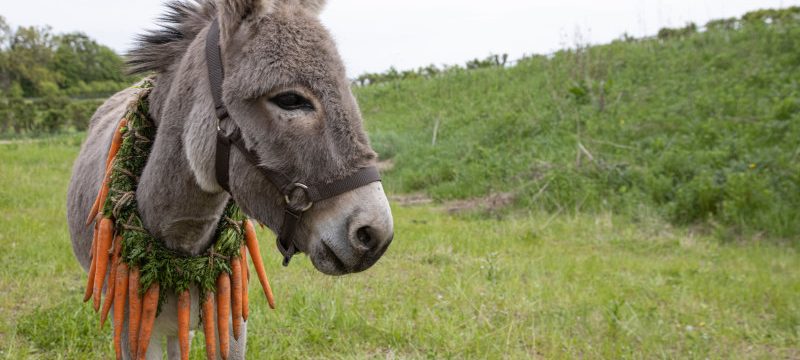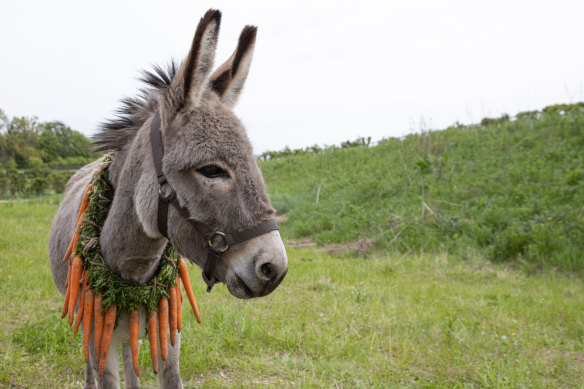Eo
87 minutes, rated MA 15+
★★★½
Eo is a little grey donkey. We follow his adventures as he wanders through modern Europe, getting into scrapes he does not understand and learning the hard way that you cannot trust humans. The film, by Polish master Jerzy Skolimowski, is both moving and puzzling, a story about an innocent done in a style that doesn’t always have the same innocence.
As a pairing of sound and image, it is often beautiful, even stunning. Skolimowski, now 84, collaborated with Polish composer Pawel Mykietyn, whose brooding score gives the film depth. It moves the images towards the abstract, which Skolimowski embraces by flooding the screen with effects, like a red wash or a blurred version of what the donkey might be seeing. The experimentation is sometimes intriguing, just as often it is jarring.
Eo wanders through modern Europe, getting into scrapes he does not understand.Credit:Aneta & Filip Gebscy/Janus Films
Skolimowski is one of the leaders of the great generation of post-war Polish directors, alongside Andrezej Wajda, Roman Polanski and Krzysztof Zanussi, who emerged in the 1960s. He hasn’t made a film for seven years, so he has a lot on his mind. Eo is both an ecological fable of anti-meat and anti-industrial vandalism, and a commentary on modern Europe, from skinheads and football violence to inequality and poverty. It is perhaps more successful as fable, unless you enjoy a didactic approach.
The film is inspired by another donkey movie. In 1966, the great French director Robert Bresson made a film about the trials and tribulations of a small ass in the Pyrenees. Skolimowski has said that Au Hasard Balthazar is the only film that has made him cry. Eo follows a similar trajectory. It begins in a circus, where Eo’s young trainer (Sandra Drzymalska) lavishes him with affection. When the circus goes bankrupt, Eo is sold to a horse stud, then a farm, from which he runs away. He keeps going, as he doesn’t know what else to do.
Later on, Isabelle Huppert makes a short appearance as a countess whose gambling stepson – a priest – saves Eo from the salami factory. There is a short psychodrama between the two humans and then Eo takes off. Neither Eo nor I could understand what that was all about.
There is a beauty in observing what life might be like for an animal. It makes us pause and think about the cruelties we allow in the name of food – not just meat but all the processes in which animals are beasts of burden. Festival audiences in Europe and North America have responded with great affection to this film.
Some critics have lavished it with extravagant praise. I would have liked it more if Skolimowski had offered less of his editorial comment, but that’s not his style.
It is hard not to be moved by this gallant little donkey, despite all the directorial flourishes.
A cultural guide to going out and loving your city. Sign up to our Culture Fix newsletter here.
Most Viewed in Culture
From our partners
Source: Read Full Article

